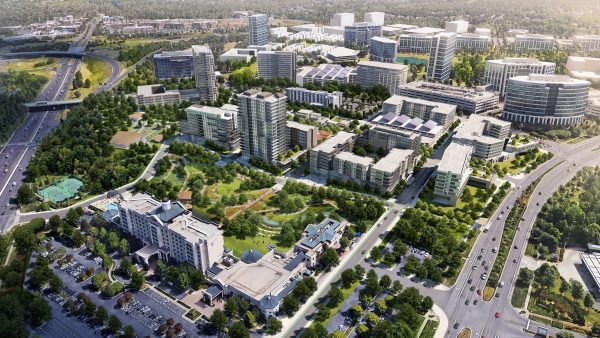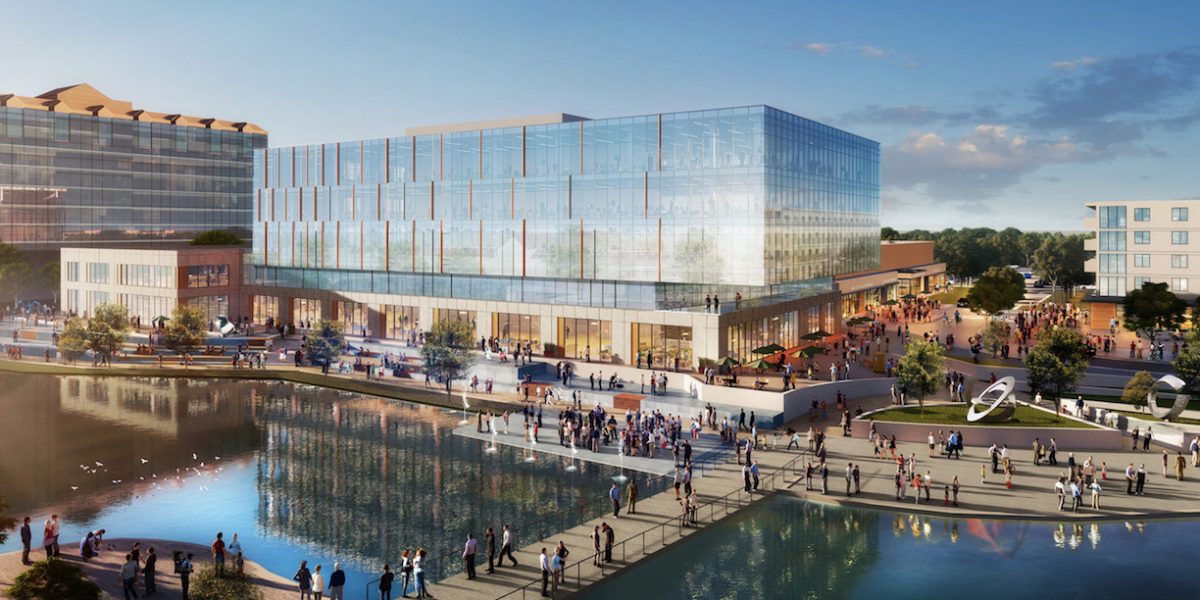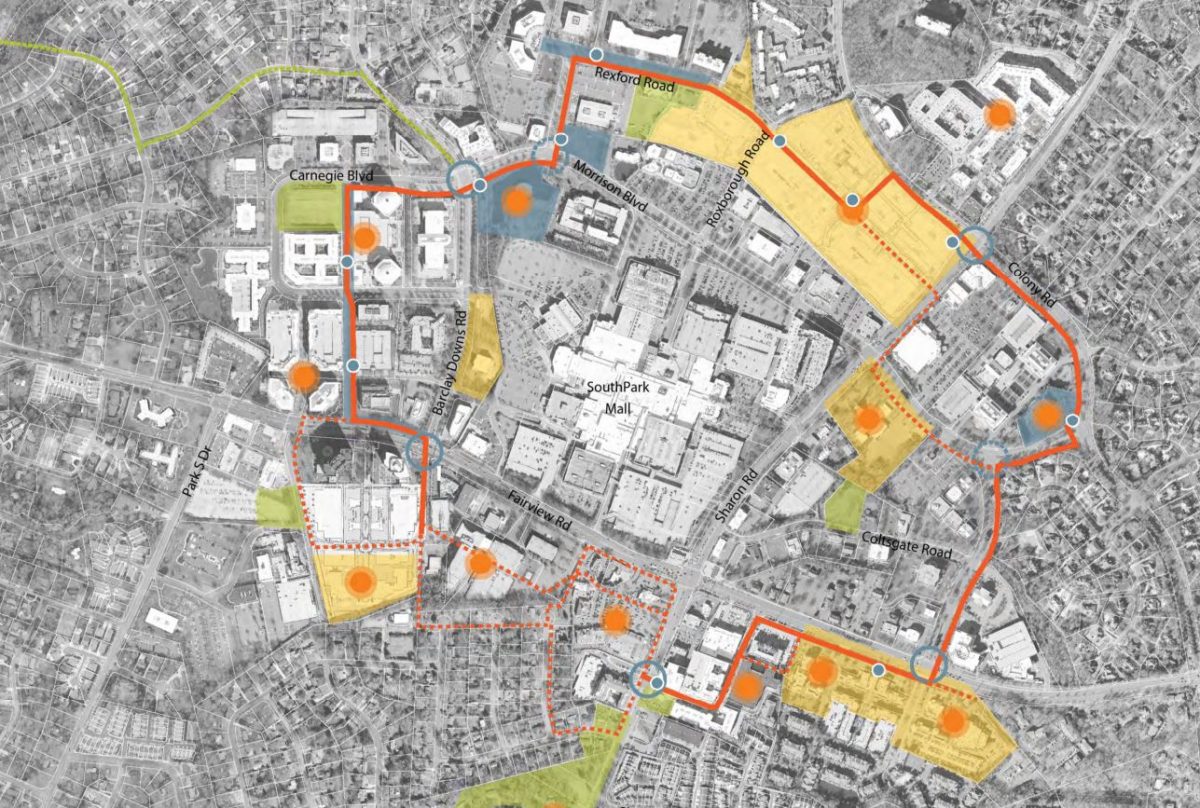From Ballantyne to SouthPark to University City, the suburbs want to be more like the city

It’s happening across Charlotte: Apartments, office buildings and restaurants are popping up in parking lots, as dense, mixed-use developments, connected by bicycle paths and walking trails, invade suburbia.
Within the past month, major plans have been announced for densifying and transforming chunks of Ballantyne, SouthPark and University City – three of the biggest bastions of suburban development in Charlotte.
Planners and developers are hoping to link disconnected cul-de-sacs, turn underused asphalt into money-making developments and give people ways to get around besides getting in their cars. For Charlotte – a Sunbelt city that came of age in the postwar era, where the car has long been king – the change represents a potentially major shift in development patterns.
A corporate park carved from farmland at an outerbelt highway interchange. The region’s premier enclosed mall, surrounded by single-family subdivisions. And a shopping center that took shape on what were once Charlotte’s fringes, devoid of any real Main Street. A generation ago, the thought of turning any of these three developments into miniature city centers, live-work-play zones where residents could go from the office to the store to school without a car, might have seemed outlandish.
Now, it might actually happen – for all three at the same time.
“I think it’s a lot more than lipstick on a pig,” said David Walters, an architect and professor emeritus at UNC Charlotte. “Our buzzword is retrofitting the suburbs. It’s a sort of inexorable trend…We’re adding the convenience and amenities of the suburbs they haven’t had.”
Plans for the areas include:
- Thousands of apartments, an amphitheater and a new main street in Ballantyne Corporate Park. Owner Northwood Office (which bought the development for almost $1.2 billion in 2017) is already starting on an 11-story office tower, which is what the Ballantyne area has been largely known for thus far. But Northwood recently unveiled ambitious plans to build 1,000 residential units, 150,000 square feet of shops and restaurants, an outdoor amphitheater for live acts and public gathering spaces. A future phase could see another 1,000 residential units. That would replace much of the golf course and acres of parking lot that occupy large parts of the office park’s acreage today.
- Apartments, a new office building and a linear, lakefront park in University City. EB Arrow bought the western side of the Shoppes at University Place development, ringing the lake, for more than $9.1 million last year. Nestled among cul-de-sacs and acres of outdated retail developments, the first phase of the redevelopment will include a 308-unit apartment community by Crescent Communities, a 2.5-acre linear park along the lake and a five-story, 182,000 square-foot office building.
- A loop path for a three-mile walking and bicycling around SouthPark, and a new park. It isn’t that easy to get around much of SouthPark if you’re not in a car: Sidewalks are intermittent, many streets end in cul-de-sacs and high-speed traffic whizzes by on wide, high-speed streets like Fairview Road. The SouthPark Loop aims to change that. Circling the mall and surrounding neighborhoods, it would link many of the mixed-use redevelopments already underway (Such as the former “Ski Slope Church” being turned into a 355-room apartment building, 175-room hotel, shops, restaurants and new church, as well as the Colony apartments, which will become up to 990 new apartments, 225 hotel rooms, 250,000 square feet of office space and a major new retail center.). Mall owner Simon Property Group has also agreed to fund $5 million worth of improvements at Symphony Park, to be matched by the city, turning the underused patch of grass into a major new gathering place.
It’s clear that the same dynamics are reshaping older, suburban developments throughout Charlotte. The same words recur again and again in the developers’ descriptions. Vibrant. Walkable. Urban. Connectivity.

A rendering of the planned Waters Edge redevelopment at the Shoppes at University Place. Rendering courtesy EB Arrow.
So what’s driving the shift? Charlotte’s suburbs are decades old, and many of the major developments that make up their cores are in need of a refresh. SouthPark mall opened in 1970, the Shoppes at University Place dates to the 1980s, and construction at Ballantyne started in the early 1990s.
Preferences have shifted significantly since then, for both tenants and residents. Buildings surrounded by oceans of parking, accessible only by car, are less appealing than they once were, especially to companies trying to attract young workers – and developers trying to attract those companies.
Land use attorney Collin Brown told City Council on Monday that the Shoppes at University Place was, “Really cool in the 80s. Not so cool today.”
“This is a large and empty power center,” said Brown, with “tons of surface parking.”
John Barton, president of Northwood Office, said Ballantyne Corporate Park needs to update its development patterns in order to cater to the thousands of workers who commute there daily. People aren’t willing to drive as much, and as congestion worsens, they don’t want to have to go as far to do things like eat at a restaurant or see a movie.
“More than anything, it’s all about improving ease and quality of life and getting your time back,” Barton said at a recent community meeting. “If you don’t have to drive to SouthPark or uptown to engage in cultural activities, that’s a great thing.”
Barton said they’re hearing from more employers that amenities like restaurants, outdoor gathering spaces and transit are requirements, not just nice, optional features.
“When you look at these corporate relocations that come from New Jersey or wherever to look at Charlotte, they want to know you have the amenity base to attract the workers,” said Barton. “And all the workers want the same things.”
[READ MORE: As development booms, Charlotte still wrestles with density]
Architect Stephen Overcash, who’s worked in Charlotte for four decades, said he expects the urbanization of suburban malls, shopping centers and office parks to continue because there are still so many that were built on the same blueprint.
“With the rules we had back then, you pushed the buildings back and built all this parking,” said Overcash. “That was the thinking: God forbid we have people walking to restaurants.”

A preliminary map of the SouthPark Loop. City of Charlotte.
Walters has seen a similar shift in thinking. He recalled proposing a plan to densify Research Triangle Park with walkable, mixed-use developments in the early 2000s.
“People thought we were absolutely crazy,” he said. “All the developers looked at us like we were parachuting in from Mars.”
Several years ago, Research Triangle Park and Durham County launched “Park Center,” an ambitious plan to urbanize a chunk of the office park with 1,000 residences, a hotel, shops and restaurants.
Transportation challenges
One of the central ideas behind the proposed suburban redevelopments in Charlotte is that if people don’t have to drive as much to get from home to work and shopping, they’ll spend less time on the roads. That could help relieve congestion on clogged arterials: Imagine living at an apartment in the middle of Ballantyne Corporate Park and walking to work instead of driving in on Johnston Road every day.
But Walters said that without more investment in public transit and ways to get around, traffic is still likely to get worse as Charlotte’s population increases. Even if developers build more nodes of urbanity in the suburbs, people will still need to drive in between them.
“You cannot separate land use and transportation,” said Walters. “That’s the real weak link in all of this, because nobody’s got a solution…When you move between the nodes, how are you going to do it?”
The Charlotte Area Transit System is studying how to expand light rail to Ballantyne and Pineville, and cities in Cabarrus County have also expressed interest in having the Blue Line run past UNC Charlotte and across the county line. But it will take years to design those projects, which would also require additional funding.
But regardless of what the future holds for transit, it’s clear that more change is coming to Charlotte’s suburbs. Developers are betting on it.
“A critical piece of keeping (Ballantyne) full in the future is all this,” said Barton, “Because this is what people want.”